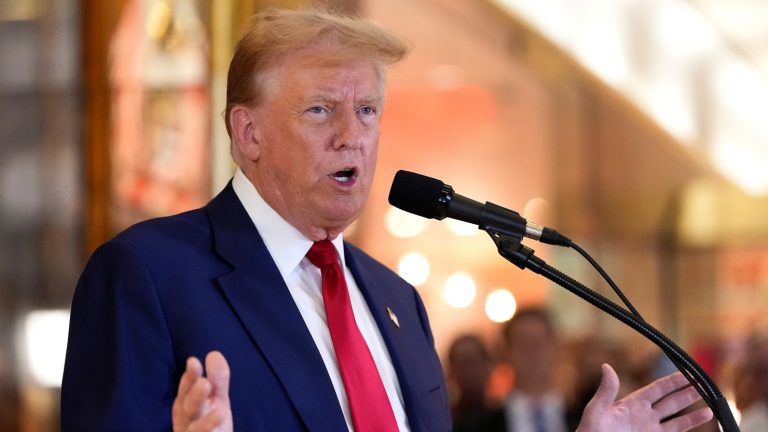Trump Orders 25% Tariff on Steel and Aluminum Imports, Sparking Global Backlash
President Donald Trump has announced a 25% tariff on all steel and aluminum imports into the United States, significantly expanding existing trade restrictions.
The tariffs, set to take effect on March 12, are expected to raise import costs despite warnings from key trading partners, including Canada—the top supplier of these metals to the U.S.—as well as other nations.
While U.S. businesses reliant on steel and aluminum imports have voiced concerns, Trump insists the move will revitalize domestic production. He emphasized that there would be no exemptions, stating his intent to “simplify” the rules.
“This is a big deal—the beginning of making America rich again,” Trump declared. “Our nation requires steel and aluminum to be made in America, not in foreign lands.”
When questioned about potential price increases for consumers, Trump responded, “Ultimately, it will be cheaper.” He also hinted at additional tariffs on pharmaceuticals and computer chips, signaling broader trade measures ahead.
Global Repercussions and Canadian Backlash
As the world’s largest steel importer, the U.S. relies heavily on Canada, Brazil, and Mexico for supply. Canada alone provided over 50% of U.S. aluminum imports last year, making it particularly vulnerable to the new tariffs.
Canada’s Minister of Innovation, François-Philippe Champagne, condemned the move as “totally unjustified,” stressing that Canadian steel and aluminum are vital to key U.S. industries, including defense, energy, and automotive manufacturing.
The Canadian Steel Producers Association urged immediate retaliation, while Liberal MP Kody Blois suggested exploring ways to reduce Canada’s trade dependence on the U.S. “This completely upends what has been a strong partnership,” he told BBC Newshour.
Market Reaction and Uncertainty
Following the announcement, U.S. steel company stocks surged, with Cleveland-Cliffs jumping nearly 20%. Prices for steel and aluminum also spiked, while the Canadian dollar and Mexican peso declined.
However, broader market reactions remained subdued, with analysts questioning whether Trump’s tariff plans were a firm policy shift or a negotiation tactic. Jane Foley of Rabobank noted skepticism, given Trump’s history of delaying or modifying tariff policies.
A Repeat of 2018?
Many experts see parallels to Trump’s first-term tariffs in 2018, when he imposed similar duties—25% on steel and 15% on aluminum—only to later grant exemptions to key allies, including Canada, Mexico, and Australia.
Douglas Irwin, an economics professor at Dartmouth College, called it “a replay of 2018,” questioning whether Trump is using the threat of tariffs as leverage or genuinely intends to push them through.
Impact on U.S. Industries and Economy
While Trump argues tariffs will boost domestic manufacturing, many U.S. industries that rely on steel and aluminum fear increased costs. Construction firms, automakers, and can manufacturers have all warned of potential price hikes.
During Trump’s first term, tariffs led to a 2.4% rise in average steel prices and a 1.6% increase in aluminum costs, according to the U.S. International Trade Commission. Critics argue that rather than creating jobs, the tariffs risk harming industries that rely on imported metals.
Stephen Moore, a former Trump campaign advisor and senior fellow at the Heritage Foundation, believes the strategy is less about economics and more about political leverage. “Just about everything Donald Trump does in Washington is a negotiating tactic,” he said.
Targeting China and Trade Imbalances
Trump officials argue that the latest tariffs aim to curb trade abuses, particularly by preventing countries like China and Russia from bypassing tariffs by exporting products through intermediary nations.
The new rules will require steel to be “melted and poured” and aluminum to be “smelted and cast” in North America. Proponents of the tariffs, including the Coalition for a Prosperous America, say they are particularly concerned about an increase in steel imports from Mexico beyond previously agreed limits.
Nick Iacovella, a spokesman for the group, emphasized that Canada’s trade surplus with the U.S. remains a key concern for Trump. “There are still imbalances in the Canada-U.S. trade relationship that should be addressed,” he said.
While Trump’s tariff stance remains firm, whether he will follow through without exemptions—or use it as a bargaining tool—remains to be seen.



